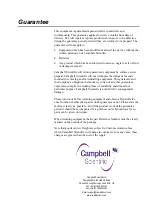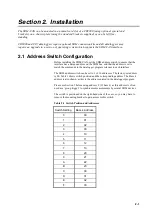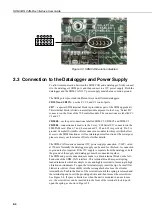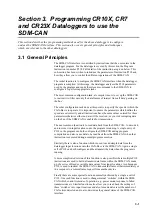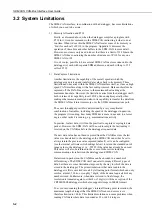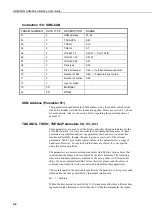
Section 2. Installation
Figure 2-4 Using the Spring Loaded Terminal Blocks (Top Option)
Figure 2-5 Using the Spring Loaded Terminal Blocks (Front Option)
Where you need to install more than one wire in a single terminal connector, use
only stranded wires and twist the wires together before inserting them in the
terminal. This type of terminal is not suitable for use with multiple solid core
wires unless the wires are joined externally, e.g. using a ferrule.
Route the wires from the SDM-CAN interface to the datalogger connections using
the shortest route. Avoid running them near cables which could cause noise
pickup. In noisy environments use low capacitance signal cable with an overall
foil screen, connecting the screen to the datalogger power ground.
Where multiple SDM devices are in use connect them in parallel to datalogger
SDM ports, making sure each device has a unique SDM address. Ensure that the
maximum cable length between the datalogger and the SDM-CAN does not
exceed 3 metres.
An additional I/O terminal is provided on the SDM-CAN for use with dataloggers
which support interrupt driven logging events. This might typically be used to
enable the rapid capture of time critical CAN data, where the I/O port can be used
to indicate to the datalogger that data has been captured and is available for
immediate collection (see below). In most applications this function will not be
used and the terminal need not be connected. Where it is required, it should be
connected to a digital input on the datalogger.
2.3.1 LED Status Indication
When power is applied to the SDM-CAN the red ‘STATUS’ LED will flash to
indicate the current status of the unit as a result of the power-up checks.
2-5



